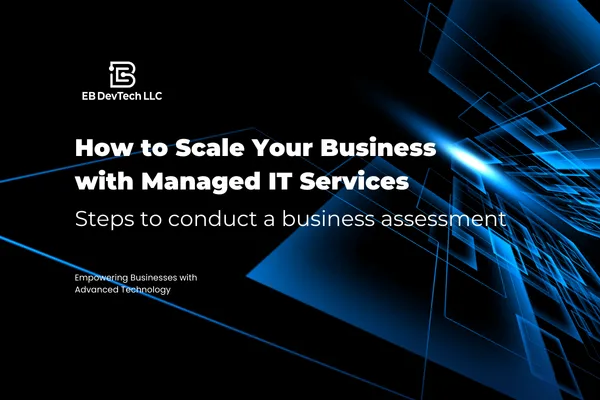
How to Do a Business Assessment: A Short Guide
In today’s fast-paced world, businesses rely heavily on Information Systems to thrive. These systems are more than just technology; they represent the interaction between people, organizations, and tools that solve complex problems. At EB DevTech, we believe every successful business starts with strong foundations, especially when it comes to IT. Here's how to perform a comprehensive business assessment to build these foundations.
What Is a Business Assessment?
A business assessment evaluates the current state of your operations, identifies areas for improvement, and sets the stage for future growth. It is analogous to constructing a building—a solid foundation is imperative before any further development. For IT systems, this entails understanding your organization's requirements, aligning technology with business objectives, and devising strategic plans.
EB DevTech has developed an operational roadmap to excellence for Field Service Management. Read more about the complete business assessment and strategy on this blog-post:
Transitioning to Modern Field Service Management
Steps to Conduct a Business Assessment
1. Understand the Current State
Internal Information: Engage with employees to gain insights into workflows, challenges, and specific needs.
External Information: Collect data from market trends and customer feedback.
Financial State: Conduct a thorough analysis of revenues, expenditures, and resource allocation.
Customer Satisfaction: Evaluate feedback to assess how effectively the business meets client expectations.
Value Proposition: Clearly articulate the distinguishing factors of your business.
2. Document Your Ecosystem
Create a comprehensive map of all operational processes and tools. Assess how various departments and systems interact, including sales, customer service, IT infrastructure, and supply chain management.
3. Set SMART Objectives
SMART stands for:
Achievable: Ensure that objectives are realistic within the available resources.
Time-bound: Assign deadlines to maintain focus and accountability.
4. Develop an Action Plan
Break objectives into manageable, actionable tasks:
5. Monitor Progress
Implement a system for regular progress reviews. Use these reviews to refine strategies and ensure alignment with overarching objectives. Consider all user's feedback, every entity can provide a perspective on all situations and use cases.
The Role of Information Systems in Business Growth
Information Systems integrate principles from business management, social sciences, and computing to address organizational challenges. Key considerations include:
A robust IT foundation facilitates:
Why Focus on Foundations?
A solid foundation is the cornerstone of sustainable business growth. Conducting a detailed assessment helps identify critical gaps, align technological solutions with business goals, and establish a clear trajectory for success.
Ready to Build Your IT Foundation?
EB DevTech specializes in guiding businesses through the process of establishing robust IT systems. From SWOT analyses to market research, we deliver customized solutions tailored to your unique requirements. Embark on your journey toward a stronger, more resilient business today.
Self Assessment - Questions for Consideration
Where are the potential hidden costs within your operations?


